When it comes to your daily caffeine fix, the choice between espresso beans and coffee beans can be a game-changer. Whether you’re a seasoned barista or a coffee novice, understanding the key differences between these two types of beans can elevate your brewing experience.
This article provides an overview of the key differences between espresso beans vs coffee beans, focusing on bean type, roasting, grinding, and brewing techniques. Get ready for an in-depth comparison, overview, and basics to help you make the perfect cup every time.
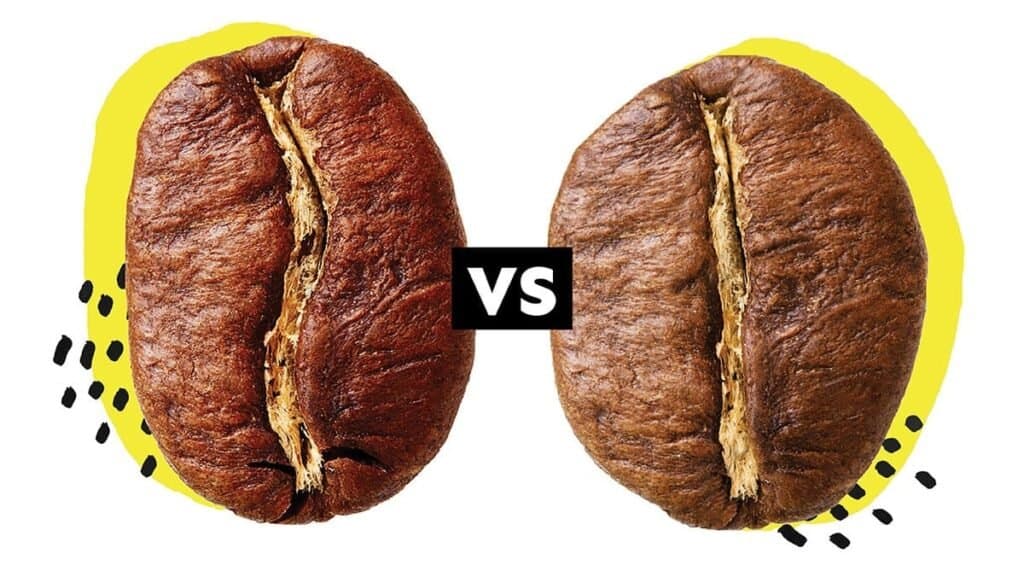
Understanding Coffee Beans
Coffee beans are the heart and soul of your morning brew, but what exactly are they? Let’s dive into the origins, varieties, and general uses in brewing different types of coffee. Coffee beans come from the Coffea plant, native to tropical regions around the world, with the most famous varieties hailing from Latin America, Africa, and Asia.

- Origins: Coffee beans have a rich history, with Ethiopia often cited as the birthplace of coffee. From there, the beans spread to Yemen and then across the globe, becoming a staple in many cultures.
- Varieties: There are two main types of coffee beans: Arabica and Robusta. Arabica beans are known for their smooth and complex flavor profiles, often described as sweet, fruity, or floral. On the other hand, Robusta beans are more robust and bitter, with higher caffeine content and a stronger taste.
- General Uses: Coffee beans are incredibly versatile and are used to brew a variety of coffee types, from a simple drip coffee to a luxurious French press. The type of bean you choose influences the flavor profiles, taste, and overall experience of your coffee. Understanding these nuances can help you select the perfect bean for your preferred brewing method.
What Makes Espresso Beans Unique?
Espresso beans hold a special place in the coffee world, renowned for their distinct qualities and the rich, intense brews they produce. In this section, we’ll explore what sets espresso beans apart from regular coffee beans, emphasizing their unique characteristics and how they differ in terms of preparation.
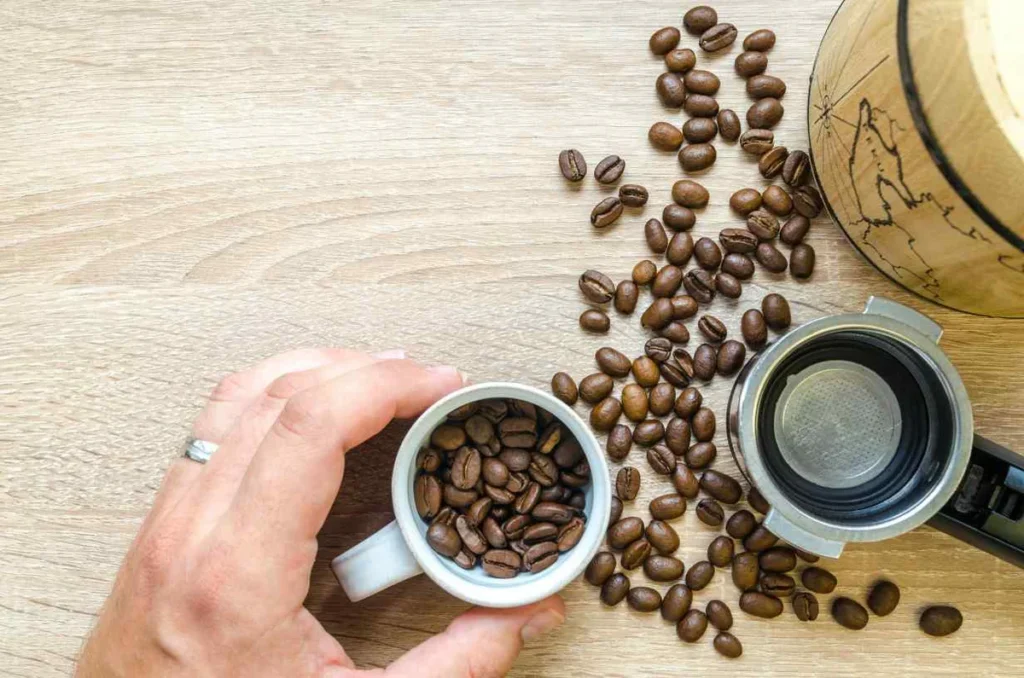
- Origins: Like regular coffee beans, espresso beans also come from the Coffea plant, with origins tracing back to regions such as Latin America, Africa, and Asia. The same primary types—Arabica and Robusta—are used, but the selection and blending of these beans are tailored specifically for espresso brewing.
- Varieties: Espresso beans are often a blend of both Arabica and Robusta beans. The Arabica beans contribute to the rich, nuanced flavor profiles, while the Robusta beans add depth and a stronger caffeine kick. This blend creates the balanced, full-bodied taste that espresso enthusiasts love.
- Preparation: What truly makes espresso beans unique is their preparation process. These beans are roasted longer and darker compared to regular coffee beans, which helps develop a bold and robust taste. The grinding process is also more precise; espresso beans are ground much finer to ensure a smooth, concentrated brew. This fine grind is essential for the high-pressure brewing method used in espresso machines, which extracts maximum flavor and results in a rich crema on top of the espresso shot.
- Uses: While espresso beans are primarily used to brew espresso, they are also versatile enough for other methods. They can be used in a Moka pot, Aeropress, or even as a base for lattes and cappuccinos, making them a favorite among coffee aficionados who enjoy experimenting with different brewing techniques.
Roasting Differences
Roasting plays a pivotal role in defining the flavor and aroma of both espresso and regular coffee beans. Understanding the nuances in roasting levels can help you appreciate how these differences influence the flavor and brewing technique.
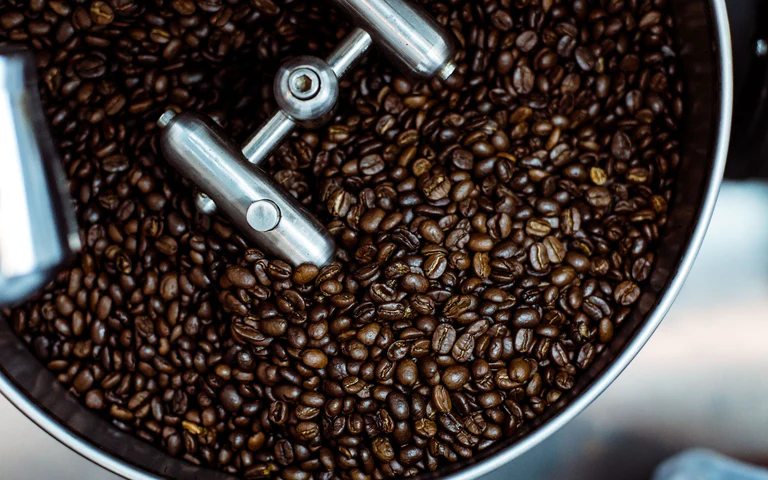
Espresso Beans
Espresso beans are typically roasted darker than regular coffee beans. This longer roasting process enhances the beans’ natural oils, resulting in a rich, bold, and intense flavor profile. The darker roast also brings out deeper, more caramelized notes, which are essential for the robust taste of espresso. This dark roast is crucial for the high-pressure brewing method used in espresso machines, as it ensures the extraction of a strong, concentrated brew with a distinctive crema.
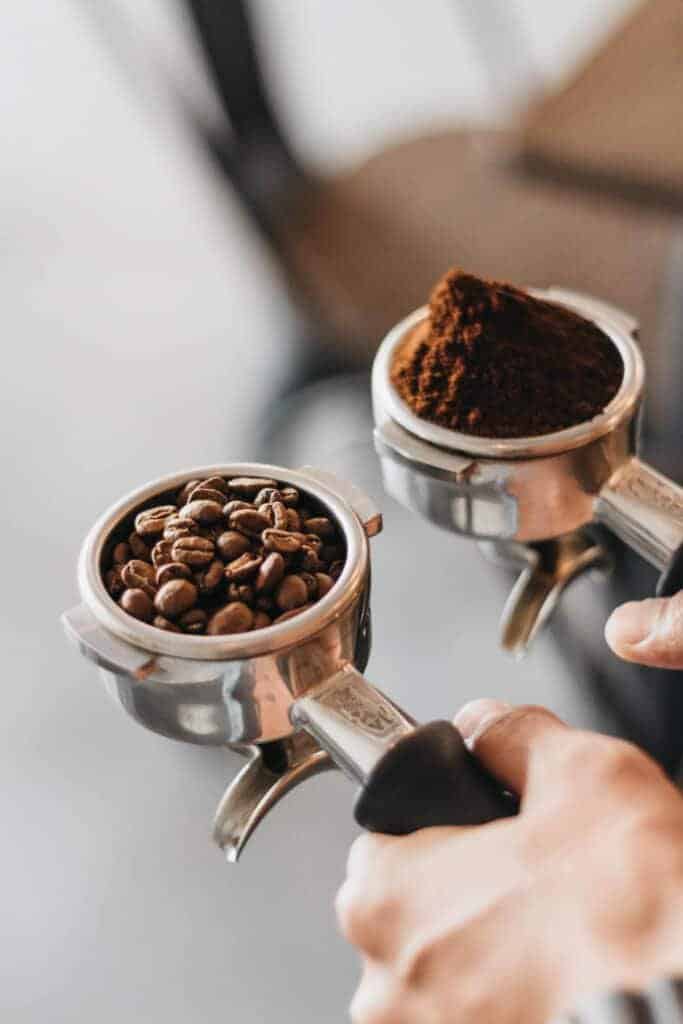
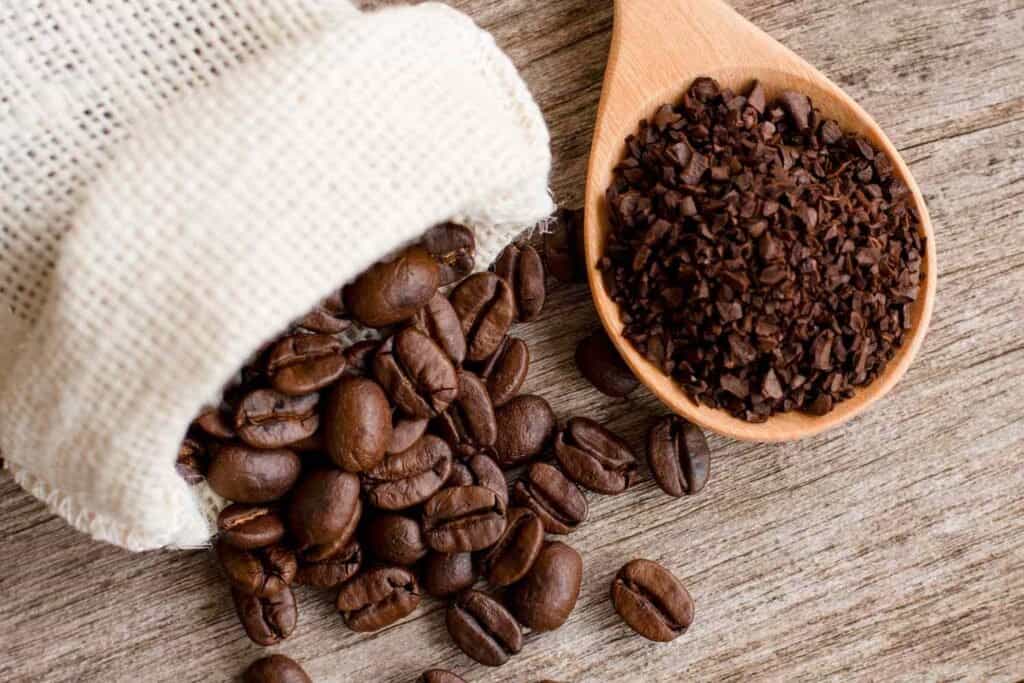
Coffee Beans
Regular coffee beans, on the other hand, can be roasted to various levels—light, medium, or dark—depending on the desired flavor profile. Lighter roasts tend to highlight the beans’ natural acidity and fruity or floral notes, while medium roasts balance acidity with sweetness and complexity. Dark roasts, similar to espresso beans, offer a bolder, more robust flavor but are not typically as intense as those used for espresso.
Impact on Flavor and Brewing Technique
The roasting level difference of espresso vs regular coffee significantly affects the flavor profiles and brewing techniques for both types of beans. For espresso, the dark roast is key to achieving the strong, concentrated flavor and the signature crema. The fine grind required for espresso also complements the darker roast, allowing for optimal extraction under high pressure.
Grinding and Brewing Techniques
The grinding requirements and brewing methods for espresso beans differ significantly from those for regular coffee beans. Understanding these differences is crucial for achieving the best possible flavor and texture in your cup.
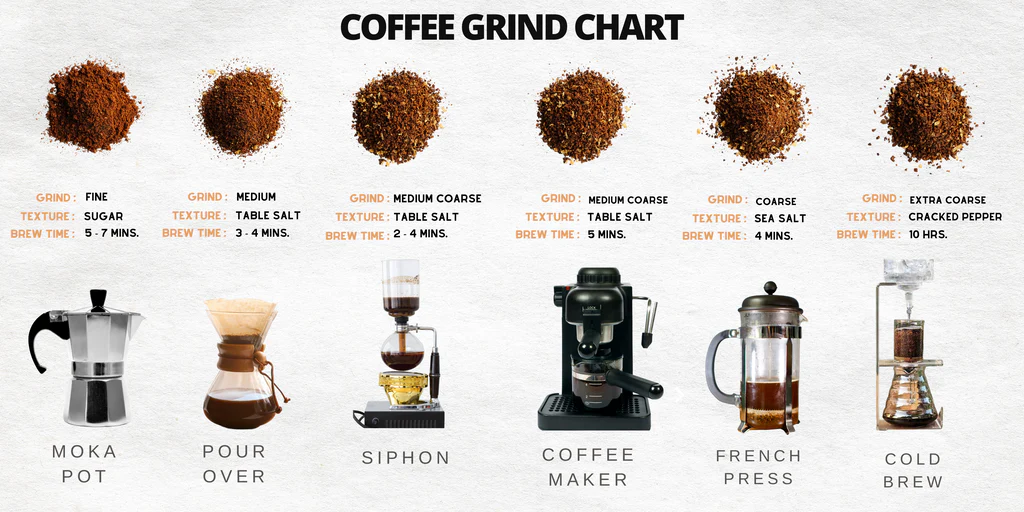
Espresso Beans:
Espresso requires a very fine grind, almost like powdered sugar. This fine grind is necessary because espresso machines use high pressure to force hot water through the tightly packed coffee grounds. The fine grind ensures that the water extracts the maximum amount of flavor in a short amount of time, resulting in a rich, concentrated shot of espresso with a distinctive crema on top.
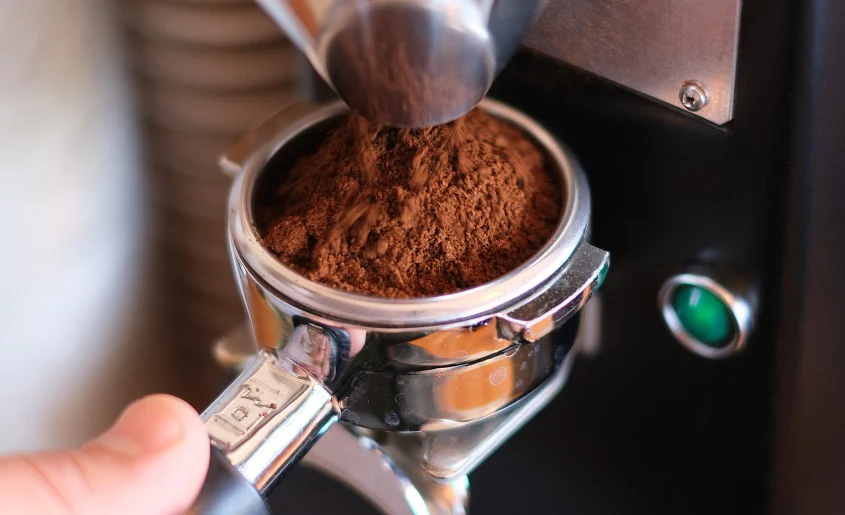
Regular Coffee Beans:
The grind size for regular coffee beans varies depending on the brewing method. For instance:
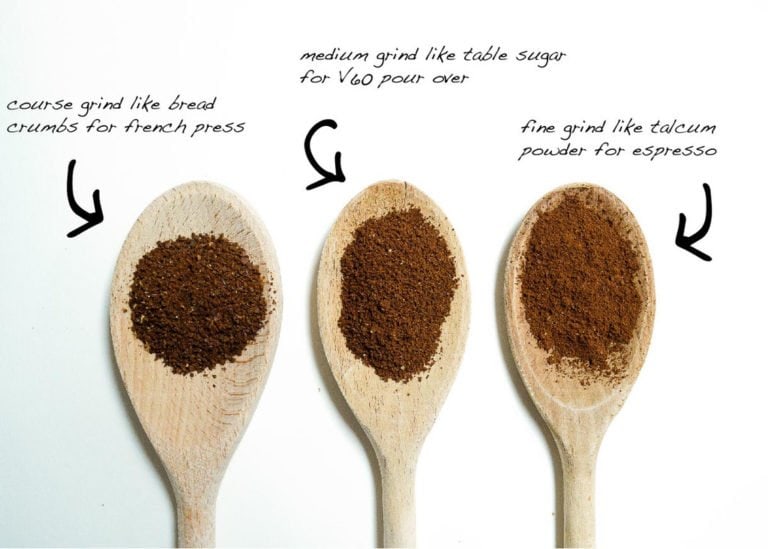
- Coarse Grind: Ideal for French press and cold brew. The larger particles allow for a slower extraction process, which helps to prevent over-extraction and bitterness.
- Medium Grind: Best for drip coffee makers and pour-over methods. This grind size strikes a balance between extraction speed and flavor, producing a well-rounded cup of coffee.
- Fine Grind: Used for methods like Aeropress and Moka pot, which require a slightly finer grind than drip coffee but not as fine as espresso.
Brewing Methods
Espresso Beans: Espresso is traditionally brewed using an espresso machine, which uses high pressure (around 9 bars) to force hot water through the finely ground coffee. This process takes about 25-30 seconds and produces a small, intense shot of coffee. Espresso can also be brewed using other methods that mimic this high-pressure extraction, such as the Aeropress or Moka pot, though the results may vary slightly.

Regular Coffee Beans: Regular coffee can be brewed using a variety of methods, each of which affects the final flavor profile:
- Drip Coffee Maker: A popular and convenient method that uses medium-ground coffee. Hot water drips through the coffee grounds, extracting flavor over a longer period.
- Pour-Over: A manual method that allows for greater control over the brewing process. Medium-ground coffee is placed in a filter, and hot water is poured over it slowly to extract flavors evenly.
- French Press: Uses coarsely ground coffee. The coffee grounds steep in hot water for several minutes before being separated by pressing down a metal filter.
- Cold Brew: Involves steeping coarsely ground coffee in cold water for an extended period (usually 12-24 hours). This method produces a smooth, less acidic coffee.
Flavor Profiles and Taste Experience
The flavor profiles and taste experiences of espresso and regular coffee differ significantly, largely due to the roasting, flavor, and technique used in preparing the beans. Here, we’ll compare how these factors influence the final taste in your cup.
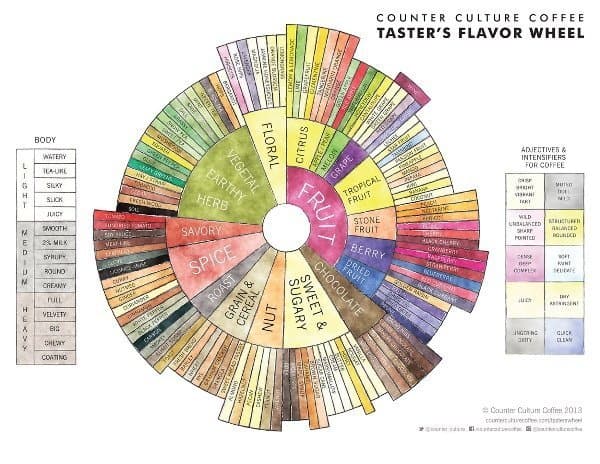
Espresso Flavor Profile
Espresso is known for its intense, rich, and concentrated flavor. This robust taste is a result of several factors:
- Roasting: Espresso beans are typically roasted darker, which enhances the natural oils and caramelizes the sugars in the beans. This process results in deeper, more complex flavors, often described as bold, smoky, and slightly sweet.
- Grinding and Technique: The fine grind and high-pressure brewing technique used in making espresso ensure maximum extraction of flavor in a short amount of time. This process also produces a thick, velvety crema on top, which adds to the overall mouthfeel and richness.
- Tasting Notes: Common tasting notes for espresso include dark chocolate, caramel, nuts, and a hint of fruitiness. The overall experience is smooth and full-bodied, with a lingering aftertaste.
Regular Coffee Flavor Profile
Regular coffee offers a more varied flavor profile, influenced by the type of bean, roasting level, and brewing method:
- Roasting: Regular coffee beans can be roasted to different levels—light, medium, or dark. Light roasts preserve the beans’ original characteristics, resulting in brighter and more acidic flavors. Medium roasts balance acidity with sweetness and complexity, while dark roasts offer a bold, rich flavor similar to espresso but with less intensity.
- Grinding and Technique: The grind size and brewing method for regular coffee vary, allowing for a wide range of flavor extraction. For example, a coarse grind in a French press produces a robust, full-bodied coffee, while a medium grind in a drip coffee maker results in a balanced, smooth cup.
- Tasting Notes: The tasting notes for regular coffee can range from fruity and floral to nutty and chocolatey, depending on the bean variety and roast level. Light roasts might highlight citrus or berry flavors, while medium and dark roasts bring out caramel, cocoa, and spice notes.
Influence of Bean Treatment
The way beans are treated, from roasting to grinding and brewing, significantly influences their flavor:
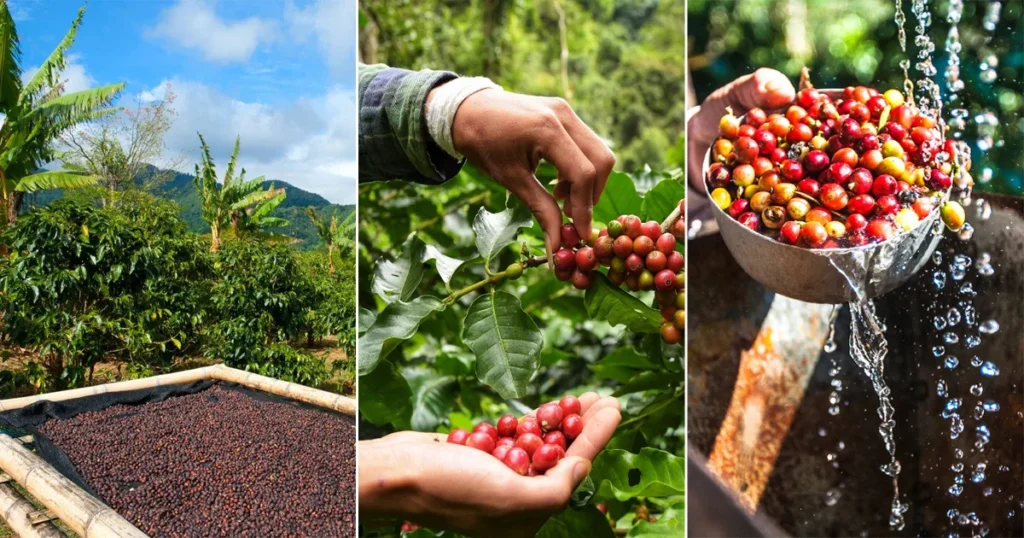
- Roasting: Darker roasts, like those used for espresso, develop more caramelized and bitter notes, while lighter roasts retain more of the beans’ natural acidity and fruitiness.
- Grinding: A finer grind, essential for espresso, results in a more concentrated flavor, whereas coarser grinds used for methods like French press produce a milder taste.
- Brewing Technique: The brewing technique also plays a crucial role. High-pressure methods like espresso extract flavors quickly and intensively, while slower methods like drip or cold brew allow for a more gradual and nuanced extraction.
Best Practices in Selecting Beans
Choosing the right beans for your brew can elevate your coffee experience, whether you’re a fan of espresso or regular coffee. Here’s a guide to help you select the perfect beans based on your preferences and brewing equipment.
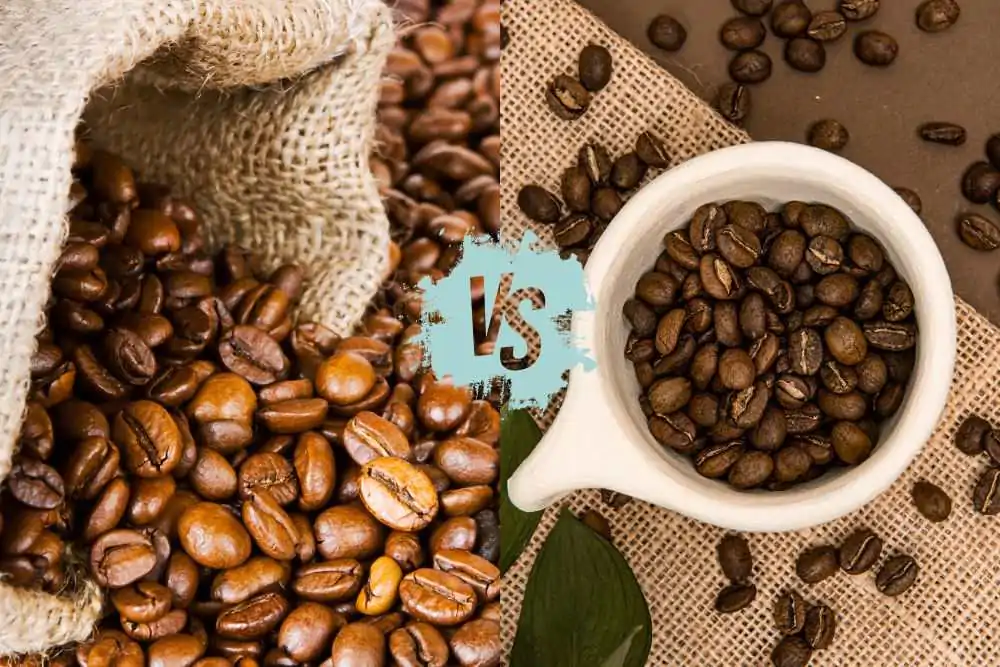
Understanding Your Preferences: Before selecting beans, it’s important to consider your taste preferences and how you enjoy your coffee:
- Flavor Profile: Do you prefer a strong, bold taste or a more subtle, nuanced flavor? Espresso beans, with their darker roast, typically offer a richer and more intense flavor, while regular coffee beans can provide a wide range of tastes from bright and fruity to deep and chocolatey.
- Caffeine Content: If you need a caffeine boost, Robusta beans might be your go-to, as they have a higher caffeine content than Arabica beans. However, Arabica beans generally offer a more refined and complex flavor.
Matching Beans with Brewing Equipment: The type of brewing equipment you use will also influence your bean selection:
- Espresso Machine: If you have an espresso machine, look for beans specifically labeled for espresso. These beans are typically a blend of Arabica and Robusta, roasted dark to withstand the high-pressure brewing process. The fine grind required for espresso ensures a concentrated and flavorful shot.
- Drip Coffee Maker: For drip coffee makers, medium-ground beans are ideal. Choose beans that are roasted to your preference—light, medium, or dark. Light roasts highlight the beans’ natural acidity and fruity notes, while medium and dark roasts offer a balanced and richer flavor.
- French Press: A French press requires coarsely ground beans. Opt for a medium to dark roast to complement the longer steeping time, which extracts more robust flavors.
- Pour-Over: For pour-over methods, medium-ground beans work best. A light to medium roast is ideal, as it allows for precise control over the water flow and extraction time, highlighting the beans’ unique characteristics.
- Cold Brew: Cold brew benefits from coarsely ground beans and a long steeping time. Choose a medium to dark roast to achieve a smooth, mellow flavor with low acidity.
Experimentation and Personalization: Selecting the right beans is also about experimentation and finding what works best for you:
- Sample Different Beans: Don’t hesitate to try different types of beans from various regions and roasters. Many specialty coffee shops offer sample packs that allow you to explore a variety of flavors and roasts.
- Adjust Grind Size: Experiment with different grind sizes to see how they affect the flavor and extraction of your coffee. A finer grind can intensify the flavor, while a coarser grind can produce a milder taste.
- Blend Your Own: If you’re adventurous, try blending different beans to create your own unique flavor profile. Combining beans with complementary flavors can result in a well-rounded and satisfying cup.
Tips for Storing and Handling Beans
Proper storage and handling of your espresso and coffee beans are crucial to maintaining their freshness and flavor. Here are some tips to ensure your beans stay at their best.
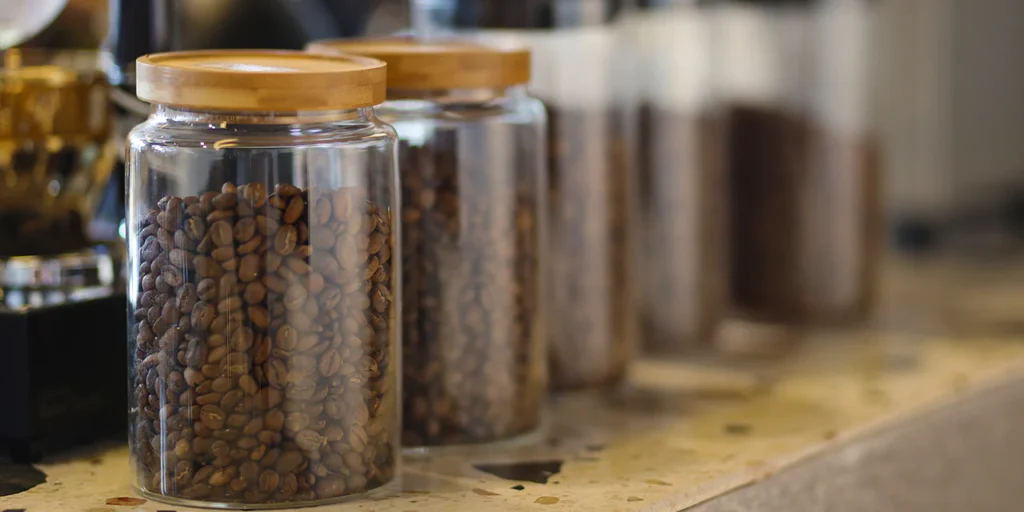
Storage Tips
- Keep Them Airtight: Air is the enemy of fresh coffee. Store your beans in an airtight container to prevent oxidation, which can cause them to go stale. Opt for containers with one-way valves that allow carbon dioxide to escape without letting air in.
- Avoid Heat and Light: Exposure to heat and light can degrade the quality of your coffee beans. Store your container in a cool, dark place, like a pantry or cupboard, away from direct sunlight and heat sources.
- Use Opaque Containers: Clear containers might look nice, but they allow light to penetrate and affect the beans. Use opaque containers to keep your beans in the dark.
- Only Grind What You Need: Grind your beans just before brewing to preserve their flavor. Ground coffee loses its freshness much faster than whole beans due to the increased surface area exposed to air.
Handling Tips
- Buy Fresh: Purchase coffee beans in small quantities to ensure you’re always using fresh beans. Look for the roast date on the packaging and try to use the beans within two to three weeks of roasting.
- Store in Bulk: If you buy in bulk, divide your beans into smaller portions. Store the bulk of your beans in an airtight container and only keep a small amount in a separate container for daily use. This minimizes the exposure to air each time you open the container.
- Avoid Freezing: While some people freeze their coffee beans to extend their shelf life, this can introduce moisture and affect the flavor. If you must freeze your beans, ensure they are in a completely airtight container and only take out what you need, avoiding repeated thawing and refreezing.
- Keep Them Dry: Moisture can ruin coffee beans, leading to mold and degradation of flavor. Ensure your storage containers and environment are dry. Never store beans in the refrigerator, as the humidity can affect their quality.
- Use a Coffee Vault: Consider investing in a coffee vault designed to keep beans fresh. These containers often come with additional features like vacuum sealing and one-way valves to maintain optimal freshness.
The Impact of Bean Choice on Coffee Quality
Choosing the right beans is essential for producing high-quality coffee, whether you’re brewing espresso or regular coffee. The type of beans you select significantly influences the flavor, aroma, and overall experience of your coffee. Let’s explore how different beans affect the quality of your brew, with examples from both espresso and regular coffee.
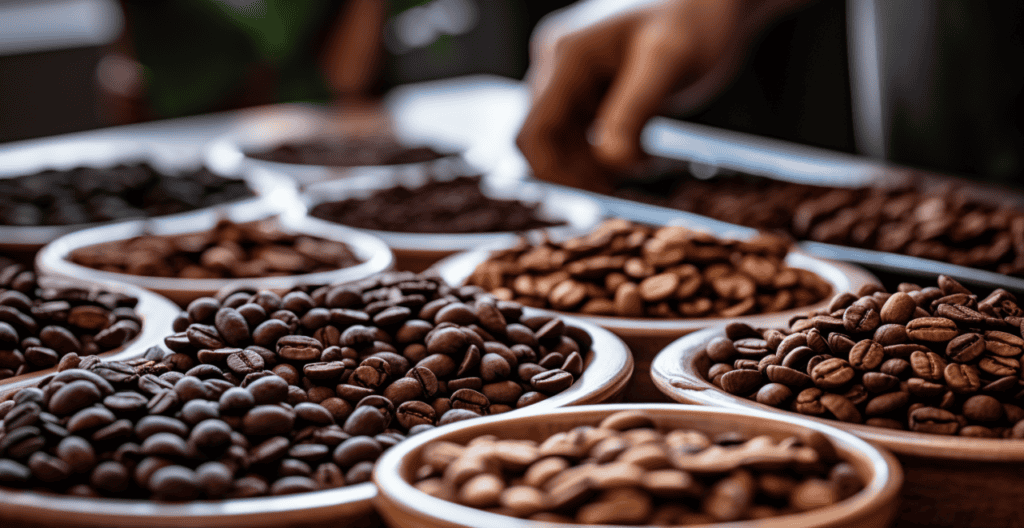
Espresso Quality
The quality of espresso is highly dependent on the choice of beans. Here’s how different factors play a role:
- Bean Type: The blend of Arabica and Robusta beans is crucial for espresso. Arabica beans contribute to the sweetness and complexity, while Robusta beans add body and kick of caffeine content in espresso beans. A well-balanced blend ensures a rich and satisfying shot of espresso.
- Roasting: Darker roasts are preferred for espresso as they enhance the beans’ natural oils and sugars, resulting in a bold and intense flavor. The roasting process also affects the crema, the golden layer on top of a well-pulled shot, which is a hallmark of high-quality espresso.
- Freshness: Freshly roasted and ground beans are essential for the best espresso. Stale beans produce a flat and lackluster shot, while fresh beans yield vibrant flavors and aromas.
Regular Coffee Quality
For regular coffee, the choice of beans influences various aspects of the brew:
- Bean Variety: Different varieties of coffee beans, such as single-origin or blends, offer diverse flavor profiles. Single-origin beans highlight the unique characteristics of a specific region, while blends combine flavors from different origins for a balanced cup.
- Roasting Levels: Light, medium, and dark roasts each bring out different flavors in coffee beans. Light roasts preserve the beans’ natural acidity and fruitiness, medium roasts balance acidity with sweetness, and dark roasts provide a bold, robust flavor.
- Brewing Method: The brewing method also affects how the beans’ qualities are expressed. For instance, a pour-over method with light-roast beans will highlight delicate, floral notes, while a French press with dark-roast beans will produce a rich, full-bodied cup.
Case Studies: Best Beans in the Market:
In the world of coffee, certain beans stand out for their exceptional quality and distinctive flavors. Let’s take a closer look at some of the best espresso and regular coffee beans available on the market and explore why they are highly regarded.

Espresso Beans Case Study: Lavazza Super Crema: Lavazza Super Crema is a popular choice among espresso enthusiasts for several reasons:
- Blend: This blend consists of 60% Arabica and 40% Robusta beans sourced from Brazil, Colombia, and Indonesia. The combination provides a balanced flavor profile with both sweetness and body.
- Roasting: The medium roast enhances the natural oils and sugars in the beans, producing a smooth and creamy espresso with a rich crema.
- Flavor Profile: Lavazza Super Crema offers notes of honey, almonds, and dried fruit, making it a versatile choice for various espresso-based drinks.
Regular Coffee Beans Case Study: Stumptown Hair Bender: Stumptown Hair Bender is a flagship blend from Stumptown Coffee Roasters, known for its vibrant and complex flavors:
- Blend: Hair Bender is a blend of beans from Latin America, Africa, and Indonesia. This diverse origin contributes to its unique and layered flavor profile.
- Roasting: The medium roast level preserves the beans’ natural acidity while bringing out sweetness and depth, resulting in a well-rounded cup.
- Flavor Profile: Stumptown Hair Bender features tasting notes of citrus, dark chocolate, and sweet cherry, creating a dynamic and enjoyable drinking experience.
Specialty Coffee Beans Case Study: Blue Bottle Coffee – Three Africas: Blue Bottle Coffee – Three Africas is a blend that showcases the best of African coffee:
- Blend: This blend combines beans from Ethiopia and Uganda, creating a vibrant and lively flavor profile.
- Roasting: The light roast preserves the delicate and fruity notes of the African beans, emphasizing their natural characteristics.
- Flavor Profile: Three Africas offers bright acidity with tasting notes of ripe berries, floral undertones, and a hint of citrus, providing a refreshing and complex cup.
Disclosure: Our blog contains affiliate links to products. We may receive a commission for purchases made through these links. However, this does not impact our reviews and comparisons. We try our best to keep things fair and balanced, in order to help you make the best choice for you.

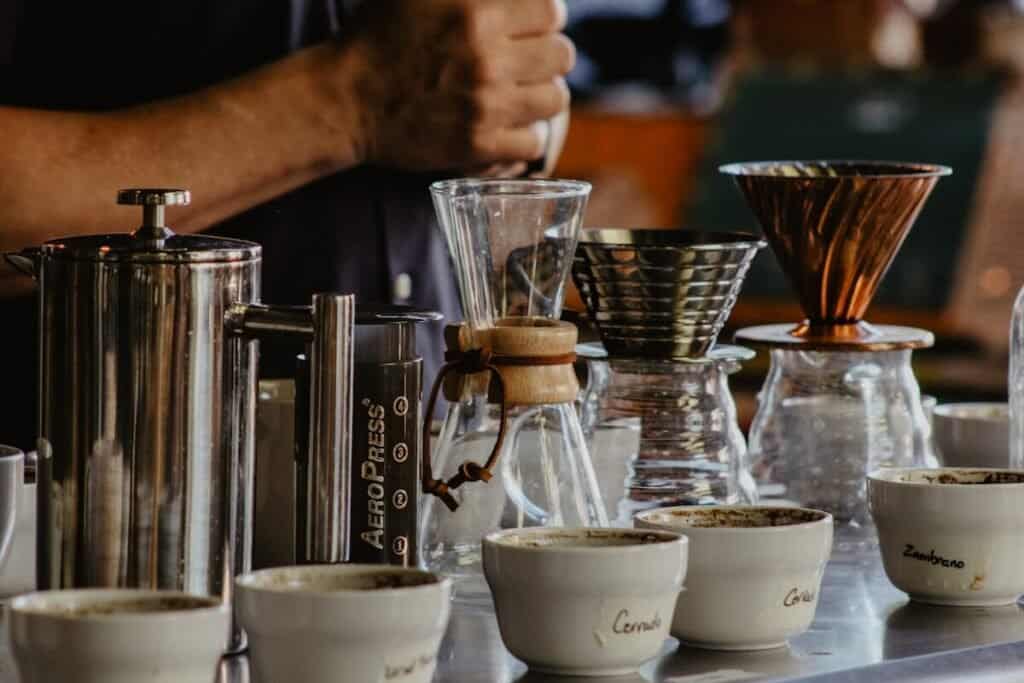
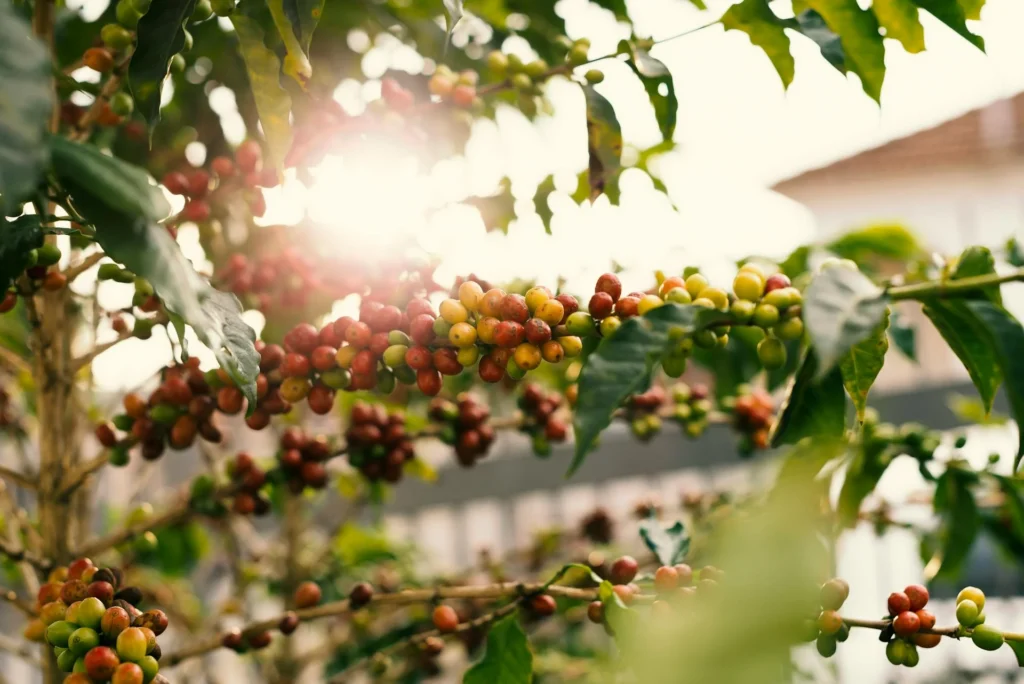
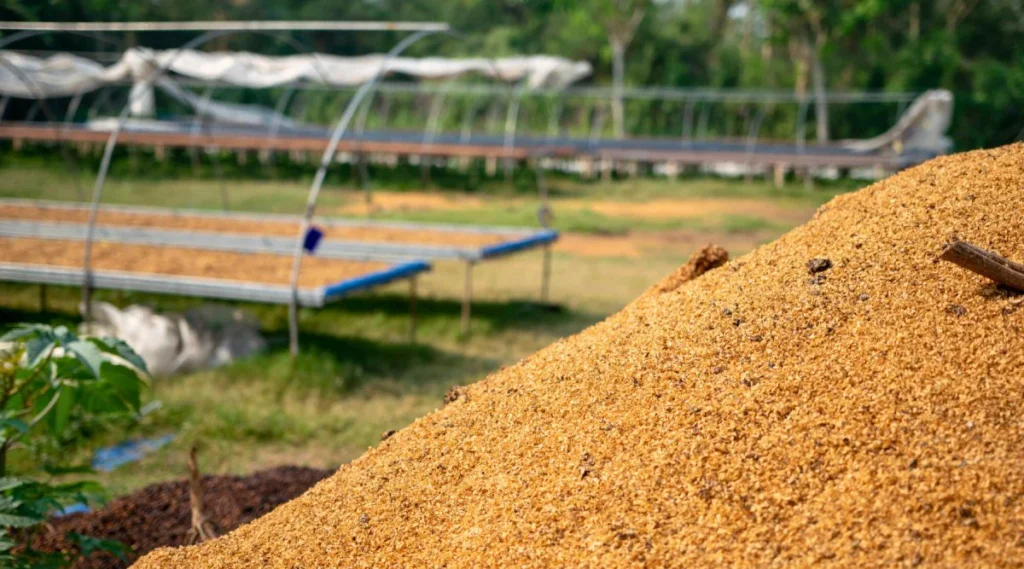
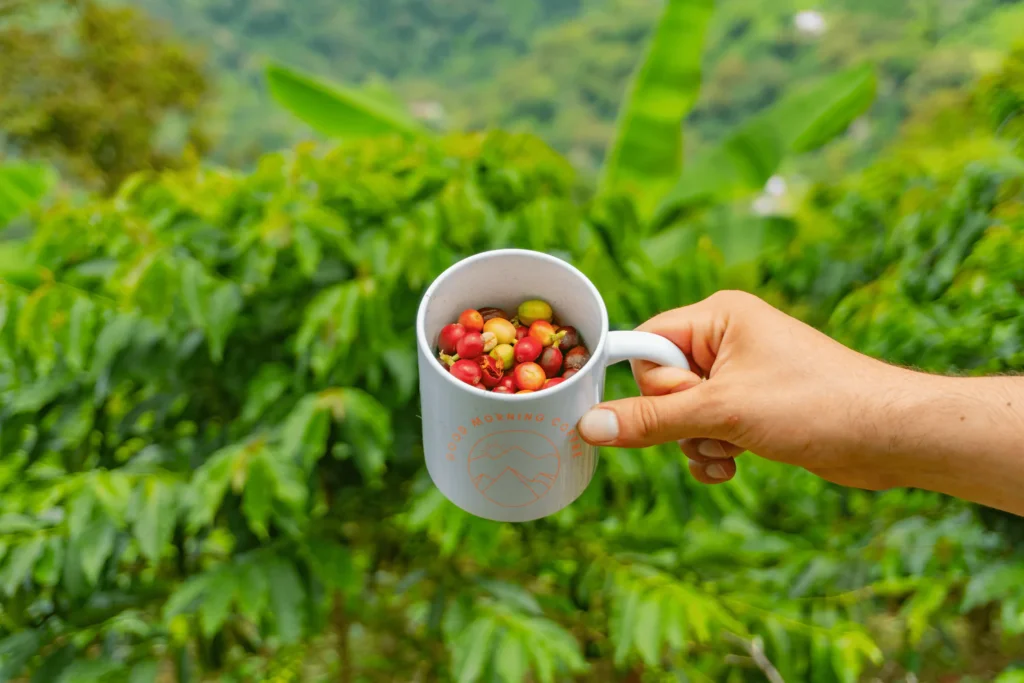

2 Responses